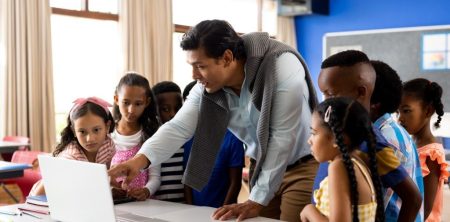In our media-saturated world, the modern teacher faces the crucial responsibility of helping students navigate and critically evaluate the content they consume. This task becomes particularly important when considering the influence of kids animated shows on developing minds. Beyond simply incorporating animation into lessons, forward-thinking educators now focus on teaching comprehensive media literacy skills that empower children to become active, discerning viewers rather than passive consumers of animated content.
The foundation of this educational approach acknowledges animation’s powerful position in children’s media diets. With streaming services making animated content accessible around the clock, many children spend significant time immersed in animated worlds. Rather than viewing this reality as problematic, skilled educators recognize it as an opportunity to develop critical thinking skills that transfer across multiple contexts, preparing students for thoughtful engagement with increasingly complex media environments.
Effective media literacy education begins with basic analytical frameworks appropriate for young learners. Teachers guide students in identifying key elements of animated stories, including protagonist goals, conflict sources, resolution methods, and underlying messages. These fundamental analytical skills help children recognize patterns across different animated programs and begin questioning the constructed nature of media narratives rather than accepting them as neutral reflections of reality.
As children develop more sophisticated cognitive abilities, educators introduce more complex analytical lenses. Discussions might explore how animated characters represent different personality types, how fictional conflicts mirror real-world issues, or how animation techniques themselves influence emotional responses. These conversations help children recognize the deliberate choices made by content creators and the potential impact of those choices on viewers’ perceptions and beliefs.
Commercial awareness represents another crucial aspect of animation-based media literacy. Many animated programs exist primarily as marketing vehicles for toys, games, and other products. Teachers help students recognize advertising strategies embedded within entertainment content, developing early consumer awareness that serves them throughout life. These discussions often prove particularly engaging as children begin recognizing marketing patterns they had previously accepted unconsciously.
Representation analysis forms a particularly important component of modern media literacy education. Teachers guide age-appropriate discussions about how different groups appear in animated content, helping students recognize both positive representation and problematic stereotypes. These conversations develop critical evaluation skills while fostering awareness of diversity issues and encouraging empathy for experiences different from students’ own backgrounds.
Historical context provides another valuable lens for animation analysis. Older animated content often reflects outdated social attitudes or cultural stereotypes that appear jarring to contemporary viewers. When teachers contextualize these elements rather than simply censoring problematic content, they create valuable teaching moments about how societal values evolve over time. This historical perspective helps students understand media products as artifacts of their creation period rather than universal or timeless expressions.
The production process itself offers rich educational material. When teachers explain how animated programs move from concept to completion – involving writers, voice actors, animators, musicians, and many others – they demystify media creation. This knowledge empowers students, helping them recognize that media products result from human decisions rather than appearing fully formed as inevitable expressions. Some educators extend this learning through simple animation projects that allow students to experience content creation firsthand.
Digital citizenship naturally connects with animation-based media literacy education. As children engage with animated content across multiple platforms, teachers guide discussions about appropriate online behavior, privacy considerations, and respectful fan community participation. These conversations help students develop responsible media engagement habits that serve them well as they navigate increasingly complex digital environments throughout their lives.
Parental partnership strengthens the effectiveness of school-based media literacy education. When teachers communicate with families about media literacy concepts being taught in the classroom, they create opportunities for reinforcement through home discussions about animated content. Many schools now offer parent workshops on guiding children’s media consumption, creating consistent approaches that maximize educational benefits across different environments in children’s lives.
Age-appropriate implementation requires thoughtful consideration of developmental stages. With younger children, teachers focus on concrete concepts like distinguishing between reality and fantasy or identifying basic story elements. Middle elementary students might explore character motivations and simple messaging, while older elementary and middle school students can engage with more sophisticated concepts like target audience analysis and creator intent. This developmental progression builds comprehensive media literacy skills over multiple years.
The ultimate goal transcends specific animated content to develop transferable critical thinking skills. When teachers successfully implement comprehensive media literacy education, students apply analytical frameworks independently across diverse media formats. This educational outcome prepares children for thoughtful engagement with increasingly sophisticated content they will encounter throughout their lives, fostering informed citizenship in our media-saturated world.

